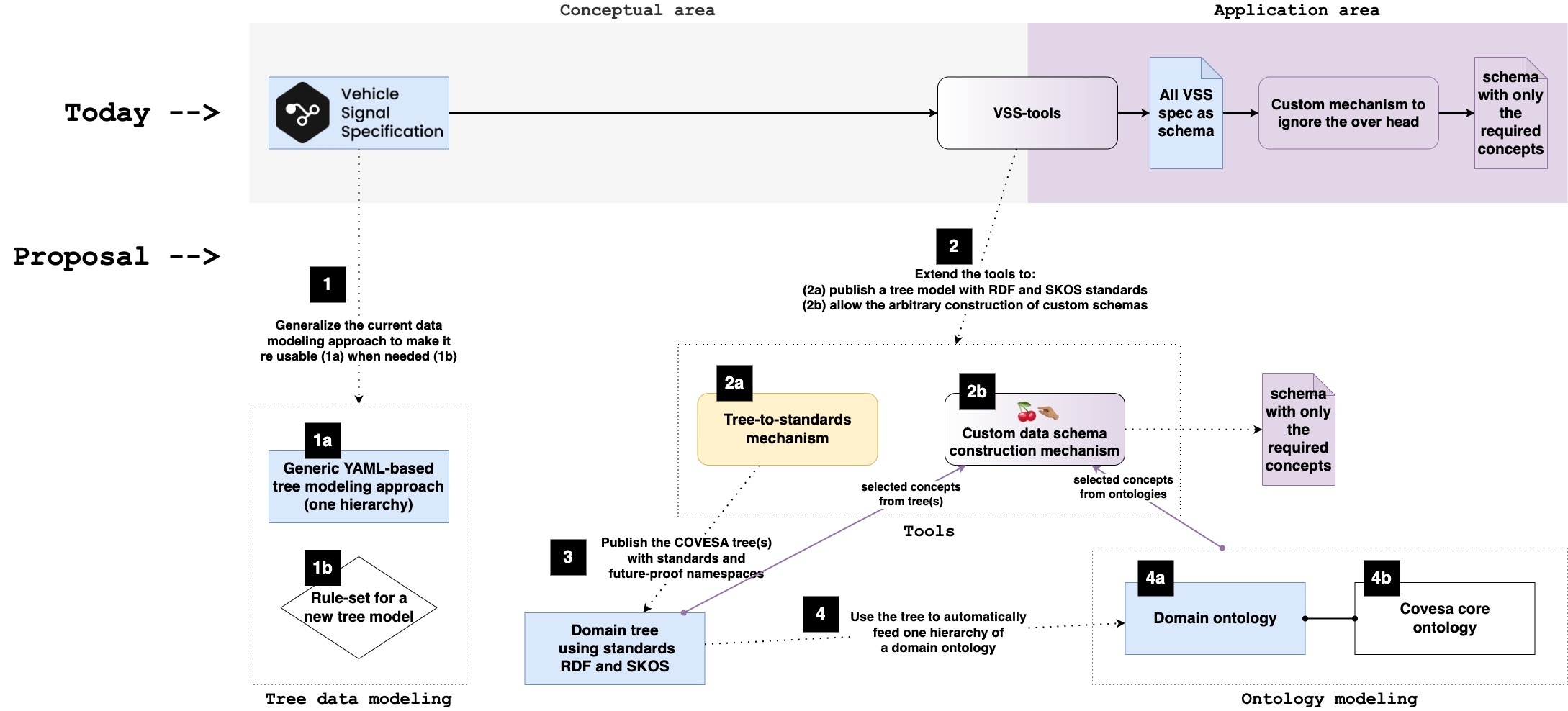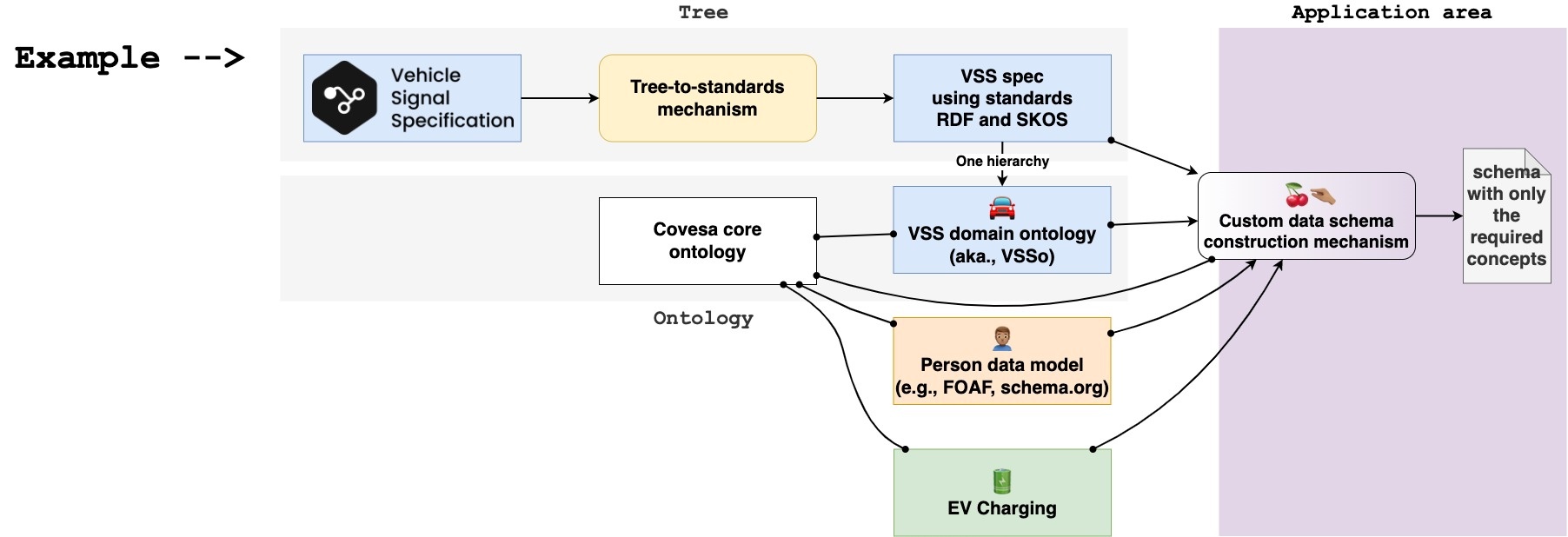JOIN/SIGN UP
Already a Member? |
GET INVOLVED
Understanding and Engaging in COVESA Expert Groups & Projects |
COLLABORATIVE PROJECTS
HISTORICAL
SDV Telemetry Project |
Already a Member? |
Understanding and Engaging in COVESA Expert Groups & Projects |
SDV Telemetry Project |
We use cookies on this site to enhance your user experience. By using this site, you are giving your consent for us to set cookies. |
You are viewing an old version of this page. View the current version.
Compare with Current View Page History
« Previous Version 11 Next »
Disclaimer
This proposal is just that, a proposal. So, contributors are very welcome. If any ideas or assertions presented in this draft are incorrect, do not hesitate to share your own view by commenting on the page or contacting the author. The principal intention of sharing these ideas is to find synergies and joint agreements on the best possible next steps for the data modeling group. In this sense, I tried to point out aspects where I believe there is room for improvement with as much constructive criticism as possible.
This page describes the proposal to restructure the data modeling activities within COVESA. First, the current state is presented to provide the necessary context. Then, the proposal is introduced.
So far, the data modeling activities in COVESA have been primarily centered on the continuous development and maintenance of the Vehicle Signal Specification (VSS) and the tools that parse VSS into different formats. In the current setup, there is no clear description of what requirements (i.e., functional and non-functional) are driving the design of the data model. It seems that the primary purpose of VSS is to serve as a naming convention for the properties of the vehicle. Nevertheless, there is little attention given to the separation of concerns:

The figure above shows how VSS modeling belongs to the conceptual area. To use the specification described in VSS (i.e., a "vspec" file), one has to parse it into a specific format (e.g., JSON) by using the VSS tools. The tools are the mechanism that makes the VSS data model usable in the application area. From the practical point of view, the application area needs a specific schema that determines the structure in which the data is to be stored. In this context, we mean long-term storage (e.g., a database) or short-term storage (RAM and variables' allocation during application execution).
In the current setup, the whole data model is taken one-to-one and parsed as the schema for the application area. Then, it is up to the specific implementation to use custom mechanisms to ignore the overhead when only some concepts defined in the data model are required or used. Although this aspect has shown no significant limitation until now, it becomes relevant when multiple domains are involved. Therefore, with the increasing interest in adding other domains apart from vehicle-specific data, it is crucial to define a data modeling strategy that can scale beyond tree hierarchies and vehicle-specific data.
The idea is to define the data modelling workflow for COVESA in terms of the conceptual area (i.e., development and maintenance of the controlled vocabulary) and the application area (i.e., tools that construct a usable schema out of the data models for a particular use case).
In other words, the proposal is not to enforce the use of ontologies. It is rather providing a common agreement on how and when to use what data model. The idea is better explained with the following diagram:

The simplicity of VSS has proven to be a successful approach for the continuous contribution of Subject Matter Experts (SMEs); just by modifying a text file, discussing the changes, and creating a pull request. The approach itself should be generalized to serve as a guideline to describe and maintain one hierarchy. The idea here is to abstract the modelling approach used in VSS and describe it with generic terms that might be re used with other domains.
Having an stablished approach to model a tree hierarchy does not mean that COVESA should motivate the arbitrary creation of multiple trees. Therefore, it is essential to define a simple set of rules that are to be satisfied before starting a new data tree that is to be developed and maintained by COVESA. Such a rule set can include, for example:

Powered by a free Atlassian Confluence Community License granted to COVESA. Evaluate Confluence today.